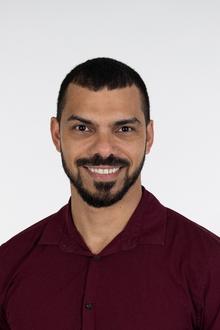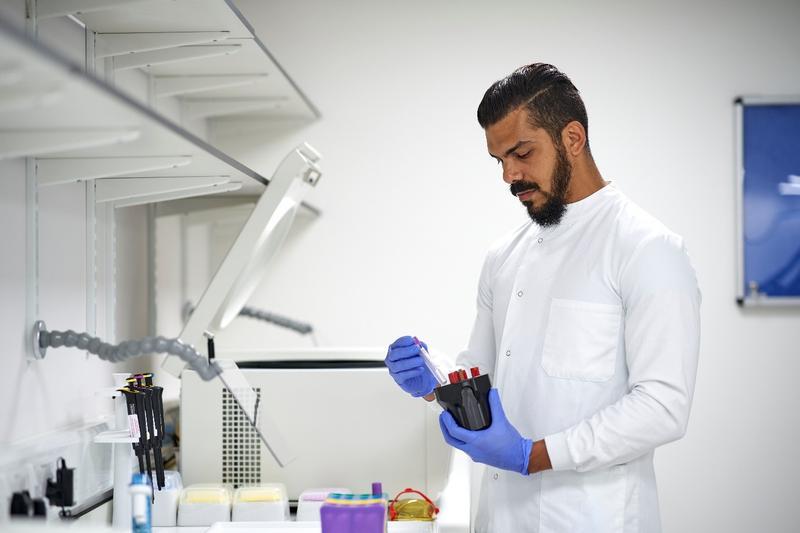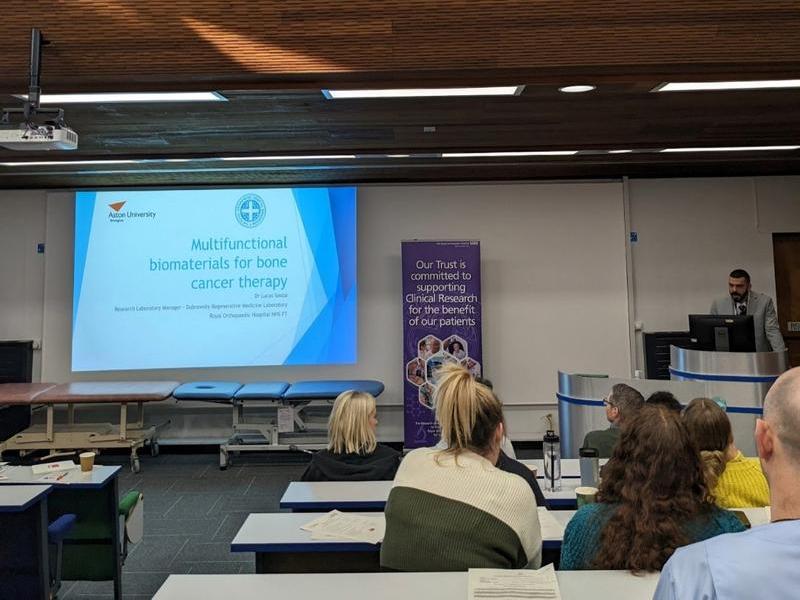A typical day for a lab manager/reseacher at the Royal Orthopaedic Hospital

Dr Lucas Souza, Lab Manager and a Researcher at the Royal Orthopaedic Hospital NHS Foundation Trust (ROH), shares what a typical day is like for a lab manager/researcher.
What does your role as Lab Manager involve?
At ROH we’re privileged to have a state-of-the-art laboratory that sits right next to theatres. In 2014, former ROH patient, Mr Michael Dubrowsky passed away and left a significant legacy gift to the Trust following treatment he received here for chondrosarcoma. This generous gift enabled us to invest in a regenerative medicine laboratory - The Dubrowsky Regenerative Medicine Laboratory which was officially launched on 17th December 2019.
The research laboratory manager plays a multifaceted role, combining administrative, managerial, and scientific responsibilities to ensure the smooth functioning and success of research activities within the laboratory. I am responsible for administrative tasks, including budget management, procurement of supplies and equipment, and ensuring compliance with institutional policies and regulations. I am in charge of maintaining and overseeing the functionality of laboratory equipment. This includes scheduling regular maintenance, troubleshooting issues, and coordinating repairs or replacements. I also oversee and manage laboratory personnel, including our research assistant, support staff, members of R&D delivery team, and the external users of the laboratory. This involves hiring, training, and evaluating their performance and their compliancy with our policies. To guarantee a safe working environment it is my responsibility to enforce safety protocols, provide training on laboratory safety, prepare risk assessments, COSHH forms and ensure the proper disposal of hazardous materials.
As lab manager I also assist in the research projects hosted in our laboratory, ensuring that timelines are met, resources are allocated appropriately, and research goals are achieved - for that facilitating communication and collaboration within the laboratory and with external collaborators is essential. This includes coordinating meetings, disseminating information, and fostering a collaborative research environment. Lastly, together with other researchers and consultants I am involved in writing grant proposals, securing funding for research projects, and managing budgets according to grant specifications.
What does a typical day look like for you?
I have a list of on-going tasks written on a whiteboard with their respective deadlines and a score of 1 to 5 stars on how complete each task is. Half of the whiteboard shows the tasks related to the management of the Dubrowsky Laboratory, this includes things like ‘Updating waste disposal SOP’, ‘Schedule Servicing/Calibration for Equipment X, Y, and Z’, ‘Calling Estates to fix X’, etc.
In the other half of my whiteboard, I list the tasks related to my research project and personal development, such as ‘Perform Experiment X’, ‘Order consumables X and Y’, ‘Draft paper X’, ‘Training course X’, ‘Ship samples to X’. Usually, I prioritise the tasks with the closest deadline and the ones that I am closer to finish to do in the morning and experiments and the other things in the afternoon.

Can you share any research projects you are currently working on?
There are a number of projects currently using the Dubrowsky Laboratory and for this research we collaborate with several different partners. Some of the organisations we collaborate with include Aston University, University of Birmingham, University of Sheffield, University of Oxford, University of Manchester, University of East Anglia and MICA Biosystems. Here are some examples of research projects currently in progress:
Development and optimisation of multi-functional bioactive materials for bone cancer therapy: Collaborative efforts by Prof Richard Martin (Aston University) and me investigating bioactive glasses containing gallium for treating bone cancers. We are testing the sensitivity of osteosarcoma cells to gallium nitrate and bioactive glasses containing gallium. The goal is to develop a bi-functional bioactive glass that can heal bone defects and kill remaining cancer cells to prevent tumour reoccurrence.
Development and optimisation of multi-functional antimicrobial bioactive materials for bone cancer therapy: Dr Farah Raja, Dr Lucas Souza, and Professor Richard Martin, Aston University. We are collecting samples of infected tissue from ROH bone cancer patients to identify which microorganisms are usually involved in these infections and testing the toxicity of bioactive glasses containing different antimicrobial metallic ions to them. The idea is to create a bi-functional biomaterial that can heal bone defects and prevent contamination.
Exploring new therapeutic opportunities based on replication stress and hydroxylase biology in next-generation chondrosarcoma models. Dr Sally Fletcher and Professor Mathew Coleman, University of Birmingham. They are collecting samples of chondrosarcoma from ROH patients to investigate the role of replication stress and of the enzyme hydroxylase in chondrosarcoma. The goal is to identify possible therapeutic targets.
Novel therapy for the treatment of degenerative spinal conditions: MICA Biosystems leads a project focused on developing a novel therapy for treating spinal conditions. MICA is collecting samples of bone from spinal surgery sites. They are extracting osteogenic cells from bone and using MICA patented technology of special nanoparticles that attach specifically to these cells and submitting them to a magnetic field that causes microvibrations to the cells and stimulate osteogenic differentiation. The goal is to produce a drug that can be injected locally in patients following spinal surgery and submit the patient to some session of externally applied magnetic field to stimulate faster bone formation, consequently faster and more effective post-operative recovery.
Extravascular role of coagulation factor IX: The Synovial Tissue is taken directly from the surgical theatre and being processed in the Dubrowsky Lab by a member of the R&D Delivery Team. The samples are then couriered out to the researcher, Dr Gael Morrow, University of Oxford.

What do you enjoy the most about your job?
The diversification of challenges. Every day I need to stretch myself and learn something new in order to deal with the challenges imposed by the management of the laboratory and my research. This job requires a vast range of skills, and I really enjoy the personal development that it brings.
